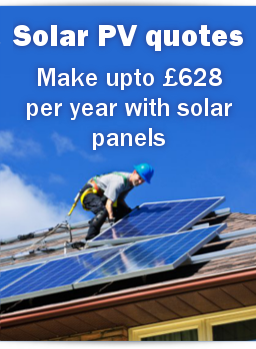You can manage your cookie preferences in the sections below. If you would like to know more, please view our privacy & cookie policy.
What does a solar inverter do?
Page last updated 05 February 2013
Solar inverters are a key component of any solar power system. They take the direct current (DC) of the electricity produced by solar panels and convert it into alternating current (AC) electricity, which can then be used to power your home. They also allow any excess electricity generated to be exported into the national grid, helping you to make a profit.
How they work
Without getting too technical, solar inverters use a pair of "power switching transistors", which are repeatedly turned off and on in order to make DC electricity seem like AC electricity. A receiver then processes the DC, converting it into AC before pumping the electricity into your system.
Efficiency is at the heart of all of the best solar inverters, which have a typical conversion rate of between 93% and 96%, with the remaining electricity used to power the inverter itself.
Types of inverter
There are two different types of inverter to choose from. The type you need will depend largely on the number of panels you have, the size of your home and the amount of money you are willing to invest in the technology.
String Inverters
These are ideal for households with a large number of solar panels that are operating under the same conditions. This means they are all facing in the same direction and are likely to receive the same amount of sunlight throughout the day. Depending on the size of your home, you may have to install a number of string inverters to achieve the best results.
Micro Inverters
In contrast to String Inverters, these are the perfect solution for properties that have a number of solar panels all facing in different directions, or smaller properties with just one or two panels. The cost per watt is higher for micro inverters, but they are easier to install initially.
Cost
As solar inverters are a new and necessary technology, the costs can be quite high, depending on the type of inverter you choose. Typical prices range from £500 for a smaller micro inverter to thousands of pounds for a top of the range, high-performance string inverter. Generally speaking, the more expensive the inverter, the greater the efficiency rating, although the lower cost models will still achieve around a 93% conversion rate.
Where to buy
There is a wide range of solar inverter outlets servicing the UK market, and a large selection of brands to choose from. SMA, one of the more popular manufacturers, have a number of inverters available, with the better Sunny Boy models ranging in price from £1,500 to £2,500. All models comply with UK regulations and achieve a conversion rate in excess of 93%.
You may also want to check out Mastervolt, who include a handy piece of free software to help you monitor the performance of your solar inverters, while charging considerably less than their SMA counterparts. You can typically find a high-performance Mastervolt inverter for around £400, while they also offer a budget, stand-alone option that does not need to be wired into your electricity system. These are available for around £100.


